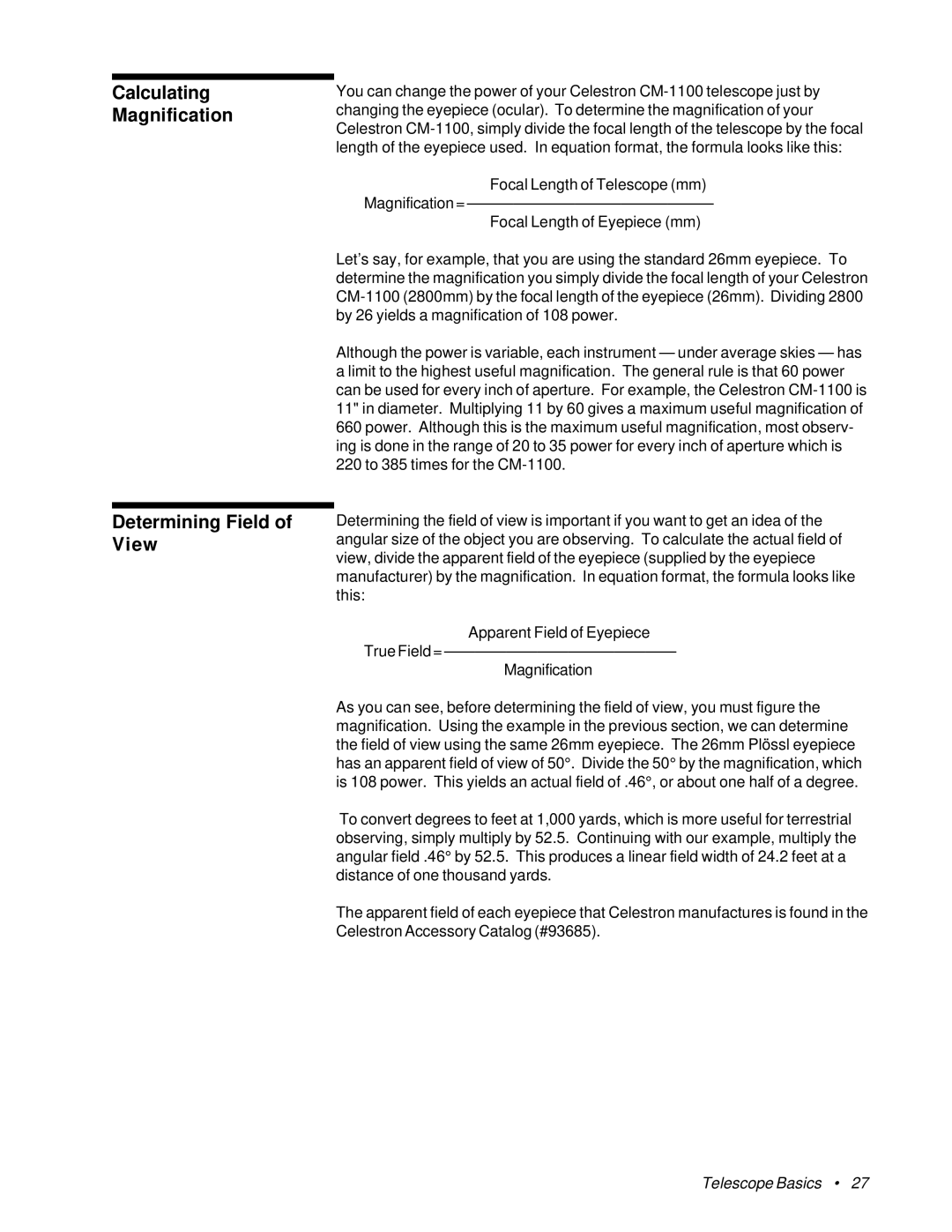
Calculating
Magnification
Determining Field of View
You can change the power of your Celestron
Focal Length of Telescope (mm)
Magnification =
Focal Length of Eyepiece (mm)
Let’s say, for example, that you are using the standard 26mm eyepiece. To determine the magnification you simply divide the focal length of your Celestron
Although the power is variable, each instrument — under average skies — has a limit to the highest useful magnification. The general rule is that 60 power can be used for every inch of aperture. For example, the Celestron
Determining the field of view is important if you want to get an idea of the angular size of the object you are observing. To calculate the actual field of view, divide the apparent field of the eyepiece (supplied by the eyepiece manufacturer) by the magnification. In equation format, the formula looks like this:
Apparent Field of Eyepiece
True Field =
Magnification
As you can see, before determining the field of view, you must figure the magnification. Using the example in the previous section, we can determine the field of view using the same 26mm eyepiece. The 26mm Plössl eyepiece has an apparent field of view of 50°. Divide the 50° by the magnification, which is 108 power. This yields an actual field of .46°, or about one half of a degree.
To convert degrees to feet at 1,000 yards, which is more useful for terrestrial observing, simply multiply by 52.5. Continuing with our example, multiply the angular field .46° by 52.5. This produces a linear field width of 24.2 feet at a distance of one thousand yards.
The apparent field of each eyepiece that Celestron manufactures is found in the Celestron Accessory Catalog (#93685).
Telescope Basics • 27
